-
 Bitcoin
Bitcoin $103,617.9038
-0.05% -
 Ethereum
Ethereum $2,486.4253
-3.30% -
 Tether USDt
Tether USDt $1.0002
0.01% -
 XRP
XRP $2.3618
-3.31% -
 BNB
BNB $650.3058
-0.89% -
 Solana
Solana $171.7622
-1.64% -
 USDC
USDC $1.0000
0.01% -
 Dogecoin
Dogecoin $0.2302
-5.52% -
 Cardano
Cardano $0.8036
-2.55% -
 TRON
TRON $0.2647
0.73% -
 Sui
Sui $3.9833
-1.07% -
 Chainlink
Chainlink $16.9285
-2.39% -
 Avalanche
Avalanche $24.5918
-3.79% -
 Stellar
Stellar $0.3052
-2.31% -
 Shiba Inu
Shiba Inu $0.0...01583
-3.27% -
 Hedera
Hedera $0.2047
-5.28% -
 Toncoin
Toncoin $3.3588
-2.65% -
 Hyperliquid
Hyperliquid $25.0206
-1.92% -
 Bitcoin Cash
Bitcoin Cash $407.5306
-4.61% -
 Pi
Pi $1.1400
50.15% -
 Polkadot
Polkadot $5.0703
-1.72% -
 UNUS SED LEO
UNUS SED LEO $8.3478
-1.18% -
 Litecoin
Litecoin $99.6661
-4.41% -
 Monero
Monero $332.0739
2.83% -
 Pepe
Pepe $0.0...01356
0.66% -
 Bitget Token
Bitget Token $4.8601
-0.91% -
 Dai
Dai $0.9999
-0.02% -
 Ethena USDe
Ethena USDe $1.0002
-0.01% -
 Uniswap
Uniswap $6.8673
-2.55% -
 Bittensor
Bittensor $450.2916
-2.04%
Which blockchains does USDT support? How to choose a transfer network?
USDT is versatile across blockchains like Ethereum, Tron, and Solana, each offering different speeds and fees; choose based on your needs for speed, cost, or security.
May 11, 2025 at 12:56 pm
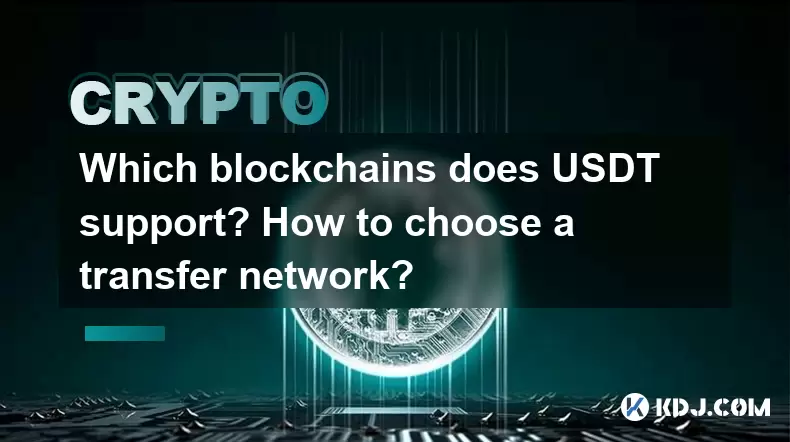
Tether (USDT) is a popular stablecoin that is pegged to the value of the US dollar. It is widely used across various blockchains, making it a versatile option for users looking to transfer value across different networks. In this article, we will explore the different blockchains that support USDT and provide guidance on how to choose the most suitable transfer network for your needs.
Blockchains Supporting USDT
USDT is available on several major blockchains, each with its own set of features and benefits. Here are the primary blockchains that support USDT:
- Ethereum (ERC-20): USDT on the Ethereum blockchain is one of the most widely used versions. It uses the ERC-20 token standard, which is compatible with a vast array of wallets and decentralized applications (dApps).
- Tron (TRC-20): USDT on the Tron blockchain is known for its fast transaction speeds and low fees. It uses the TRC-20 token standard, which is also widely supported by various wallets and dApps.
- Omni (Bitcoin): The Omni layer on the Bitcoin blockchain was the first to support USDT. While it is less commonly used today, it remains an option for those who prefer the security of the Bitcoin network.
- Solana (SPL): USDT on the Solana blockchain offers high throughput and low transaction costs. It uses the SPL token standard, which is native to the Solana ecosystem.
- Polygon (MATIC): USDT on the Polygon blockchain provides a scalable solution for Ethereum-based applications. It uses the ERC-20 token standard and is designed to offer faster and cheaper transactions compared to the Ethereum mainnet.
- Avalanche (C-Chain): USDT on the Avalanche blockchain is known for its high performance and low latency. It uses the ERC-20 token standard and is part of the Avalanche C-Chain.
Factors to Consider When Choosing a Transfer Network
When deciding which blockchain to use for transferring USDT, several factors should be taken into account:
- Transaction Speed: The speed at which transactions are processed can vary significantly between different blockchains. For example, Tron and Solana are known for their fast transaction times, while Ethereum can be slower, especially during periods of high network congestion.
- Transaction Fees: The cost of transferring USDT can also vary. Tron and Solana typically have lower fees compared to Ethereum, which can be more expensive, especially during peak times.
- Network Security: The security of the blockchain is crucial. Bitcoin and Ethereum are considered highly secure due to their long-standing presence and large network of miners and validators. Tron and Solana also have robust security measures in place, but they are newer networks.
- Wallet Compatibility: The availability of wallets that support the specific blockchain and token standard is important. Ethereum (ERC-20) and Tron (TRC-20) are widely supported, while Omni and SPL may have fewer options.
- Decentralized Application (dApp) Integration: If you plan to use USDT within dApps, consider which blockchains are most commonly used by the dApps you are interested in. Ethereum and Polygon are popular choices for many dApps.
How to Transfer USDT on Different Blockchains
Transferring USDT across different blockchains involves a few steps, which can vary slightly depending on the specific blockchain and wallet you are using. Here is a general guide on how to transfer USDT:
- Choose a Wallet: Select a wallet that supports the blockchain and token standard you want to use. Popular options include MetaMask for Ethereum and Polygon, TronLink for Tron, and Phantom for Solana.
- Fund Your Wallet: Deposit USDT into your wallet. If you are transferring from another blockchain, you may need to use a centralized exchange to convert your USDT to the desired blockchain.
- Select the Recipient: Enter the recipient's address. Make sure to double-check the address to avoid sending funds to the wrong place.
- Choose the Network: Select the appropriate blockchain network for the transfer. This is crucial, as sending USDT to the wrong network can result in lost funds.
- Enter the Amount: Specify the amount of USDT you want to send. Be aware of the minimum and maximum transfer limits, if any.
- Confirm the Transaction: Review the transaction details, including the fees, and confirm the transfer. Depending on the wallet, you may need to sign the transaction with your private key or a hardware wallet.
- Wait for Confirmation: Once the transaction is broadcasted to the network, wait for it to be confirmed. The time it takes can vary depending on the blockchain's congestion and transaction speed.
Comparing Transaction Speeds and Fees
To help you make an informed decision, here is a comparison of the typical transaction speeds and fees for USDT on different blockchains:
- Ethereum (ERC-20): Transaction times can range from a few minutes to over an hour during peak times. Fees can be high, often ranging from $1 to $20 or more, depending on network congestion.
- Tron (TRC-20): Transactions are typically confirmed within seconds to a few minutes. Fees are very low, often less than $0.01.
- Omni (Bitcoin): Transaction times can take up to an hour or more. Fees are moderate, typically ranging from $0.50 to $5.
- Solana (SPL): Transactions are confirmed in seconds. Fees are very low, often less than $0.01.
- Polygon (MATIC): Transaction times are usually a few seconds to a minute. Fees are low, often ranging from $0.01 to $0.10.
- Avalanche (C-Chain): Transactions are confirmed in seconds. Fees are low, often less than $0.01.
Choosing the Right Blockchain for Your Needs
Selecting the right blockchain for transferring USDT depends on your specific needs and priorities. Here are some scenarios to consider:
- If Speed is Your Priority: Choose Tron or Solana for their fast transaction times.
- If Low Fees are Important: Tron, Solana, and Avalanche offer some of the lowest fees.
- If Security is Your Main Concern: Bitcoin and Ethereum are considered highly secure due to their established networks.
- If You Need Wide Wallet Compatibility: Ethereum and Tron are widely supported by various wallets.
- If You Use dApps Frequently: Ethereum and Polygon are popular choices for many dApps.
Frequently Asked Questions
Q: Can I transfer USDT between different blockchains directly?
A: No, you cannot transfer USDT directly between different blockchains. You would need to use a centralized exchange or a cross-chain bridge to convert your USDT from one blockchain to another.
Q: Are there any risks associated with transferring USDT across blockchains?
A: Yes, there are risks involved, such as sending USDT to the wrong network, which can result in lost funds. Always double-check the recipient's address and the selected network before confirming a transaction.
Q: How can I check the status of my USDT transaction?
A: You can check the status of your USDT transaction by using a blockchain explorer specific to the network you used. For example, use Etherscan for Ethereum, Tronscan for Tron, or Solscan for Solana.
Q: Can I use the same wallet for different blockchains that support USDT?
A: Some wallets, like MetaMask, support multiple blockchains, but you may need to add different networks manually. Other wallets are specific to one blockchain, so you may need to use multiple wallets to manage USDT on different networks.
Disclaimer:info@kdj.com
The information provided is not trading advice. kdj.com does not assume any responsibility for any investments made based on the information provided in this article. Cryptocurrencies are highly volatile and it is highly recommended that you invest with caution after thorough research!
If you believe that the content used on this website infringes your copyright, please contact us immediately (info@kdj.com) and we will delete it promptly.
- Ethereum (ETH) Often Follows Bitcoin's Market Trends
- 2025-05-12 06:10:13
- What’s the Best Crypto to Buy Now? It’s Not BTC, ETH, or XRP — It’s Priced at Just $0.025
- 2025-05-12 06:10:13
- Can One Token Deliver AI Automation, DeFi Rewards, and 100x Potential? Introducing Unstaked ($UNSD)
- 2025-05-12 06:05:14
- Can Pepe’s rally or Litecoin’s breakout deliver better short-term gains than a daily 100M BDAG prize pool?
- 2025-05-12 06:05:14
- XRP is turning heads again following an impressive show of resilience
- 2025-05-12 06:00:22
- As Momentum Fades From Pi Coin, Investors Are Turning Their Attention To Lightchain AI
- 2025-05-12 06:00:22
Related knowledge
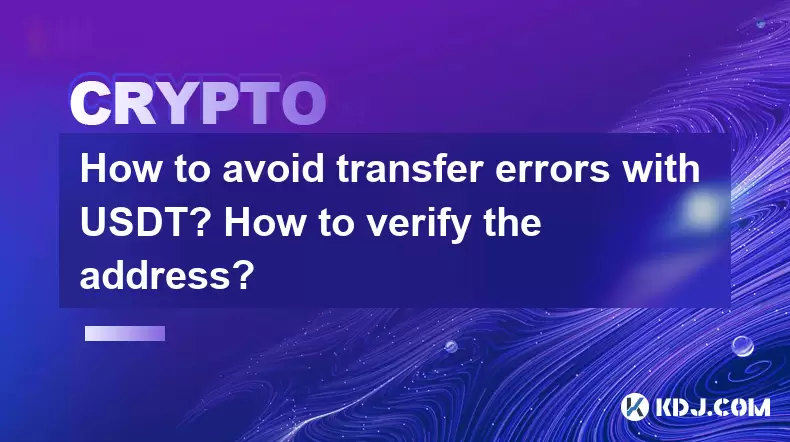
How to avoid transfer errors with USDT? How to verify the address?
May 12,2025 at 04:14am
How to Avoid Transfer Errors with USDT? How to Verify the Address? Transferring USDT (Tether) can be a straightforward process, but errors can occur if you're not careful. These errors can lead to loss of funds, so it's crucial to understand how to avoid them and verify the address before sending any USDT. This article will guide you through the steps t...
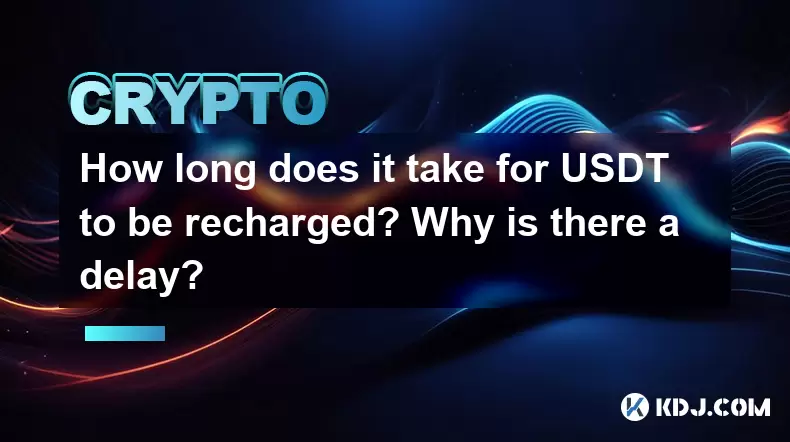
How long does it take for USDT to be recharged? Why is there a delay?
May 11,2025 at 08:14pm
Introduction to USDT Recharge TimesWhen using Tether (USDT), a popular stablecoin pegged to the US dollar, users often encounter delays in recharging their wallets. Understanding the factors that influence these delays can help manage expectations and improve the user experience. The time it takes for USDT to be recharged can vary significantly, typical...
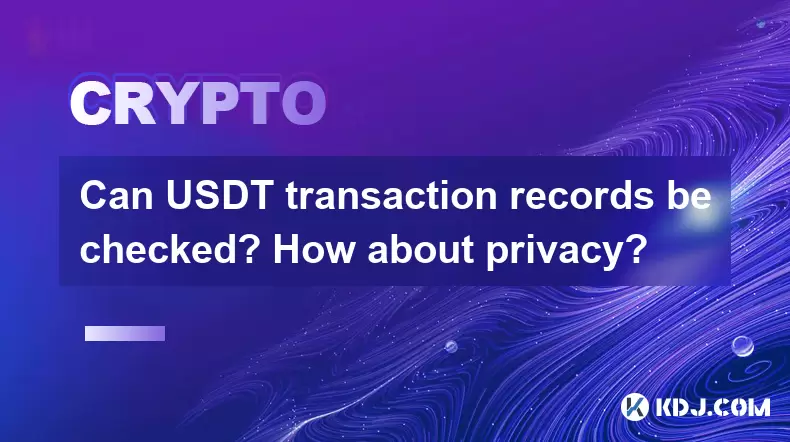
Can USDT transaction records be checked? How about privacy?
May 11,2025 at 12:42am
Can USDT transaction records be checked? How about privacy? Tether (USDT) is a popular stablecoin that is pegged to the value of the US dollar. As a cryptocurrency, USDT operates on blockchain technology, which inherently provides a level of transparency and immutability to its transactions. This raises questions about the ability to check USDT transact...
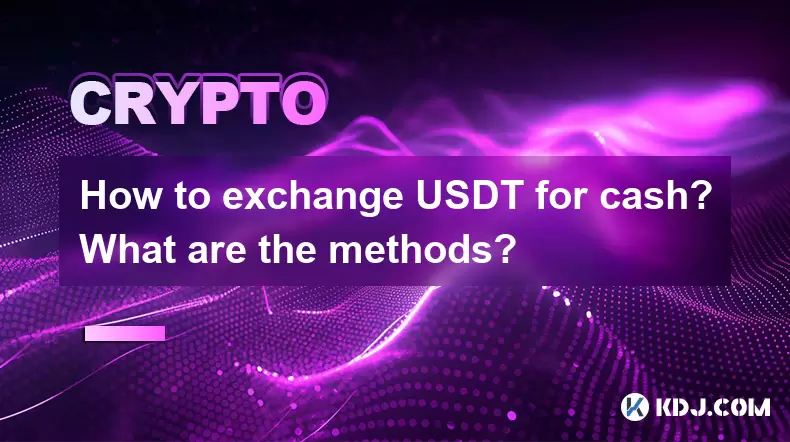
How to exchange USDT for cash? What are the methods?
May 10,2025 at 12:08pm
Exchanging USDT for cash is a common requirement for many cryptocurrency users. USDT, or Tether, is a stablecoin pegged to the US dollar, making it an attractive option for those looking to convert their crypto holdings into fiat currency. There are several methods to achieve this, each with its own set of advantages and potential drawbacks. In this art...
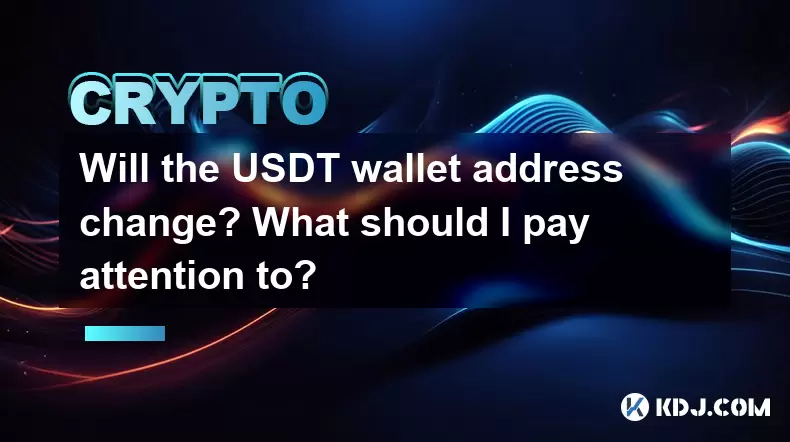
Will the USDT wallet address change? What should I pay attention to?
May 10,2025 at 08:01am
The topic of whether the USDT wallet address will change and what users should pay attention to is a critical concern for those involved in cryptocurrency transactions. USDT, or Tether, is a popular stablecoin pegged to the US dollar and widely used across various blockchain platforms. Understanding the dynamics of wallet addresses, especially in relati...
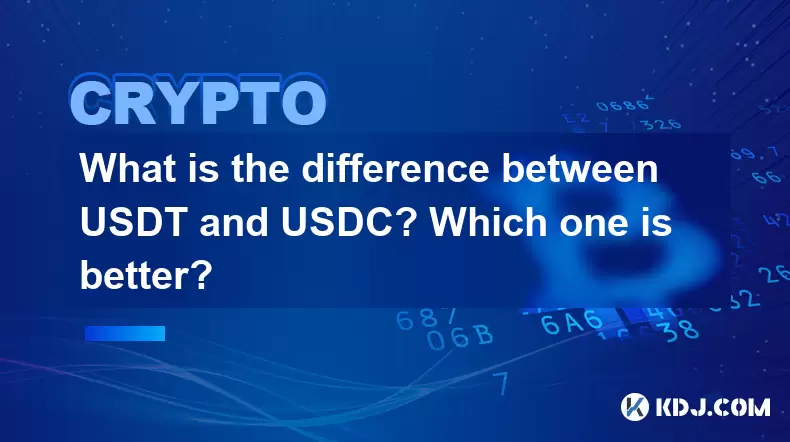
What is the difference between USDT and USDC? Which one is better?
May 12,2025 at 01:01am
USDT and USDC are both stablecoins pegged to the US dollar, designed to provide stability in the volatile cryptocurrency market. While they share similar goals, there are key differences between them that can influence which one might be better suited for your needs. What is USDT?USDT, also known as Tether, is one of the oldest and most widely used stab...

How to avoid transfer errors with USDT? How to verify the address?
May 12,2025 at 04:14am
How to Avoid Transfer Errors with USDT? How to Verify the Address? Transferring USDT (Tether) can be a straightforward process, but errors can occur if you're not careful. These errors can lead to loss of funds, so it's crucial to understand how to avoid them and verify the address before sending any USDT. This article will guide you through the steps t...

How long does it take for USDT to be recharged? Why is there a delay?
May 11,2025 at 08:14pm
Introduction to USDT Recharge TimesWhen using Tether (USDT), a popular stablecoin pegged to the US dollar, users often encounter delays in recharging their wallets. Understanding the factors that influence these delays can help manage expectations and improve the user experience. The time it takes for USDT to be recharged can vary significantly, typical...

Can USDT transaction records be checked? How about privacy?
May 11,2025 at 12:42am
Can USDT transaction records be checked? How about privacy? Tether (USDT) is a popular stablecoin that is pegged to the value of the US dollar. As a cryptocurrency, USDT operates on blockchain technology, which inherently provides a level of transparency and immutability to its transactions. This raises questions about the ability to check USDT transact...

How to exchange USDT for cash? What are the methods?
May 10,2025 at 12:08pm
Exchanging USDT for cash is a common requirement for many cryptocurrency users. USDT, or Tether, is a stablecoin pegged to the US dollar, making it an attractive option for those looking to convert their crypto holdings into fiat currency. There are several methods to achieve this, each with its own set of advantages and potential drawbacks. In this art...

Will the USDT wallet address change? What should I pay attention to?
May 10,2025 at 08:01am
The topic of whether the USDT wallet address will change and what users should pay attention to is a critical concern for those involved in cryptocurrency transactions. USDT, or Tether, is a popular stablecoin pegged to the US dollar and widely used across various blockchain platforms. Understanding the dynamics of wallet addresses, especially in relati...

What is the difference between USDT and USDC? Which one is better?
May 12,2025 at 01:01am
USDT and USDC are both stablecoins pegged to the US dollar, designed to provide stability in the volatile cryptocurrency market. While they share similar goals, there are key differences between them that can influence which one might be better suited for your needs. What is USDT?USDT, also known as Tether, is one of the oldest and most widely used stab...
See all articles





















































































